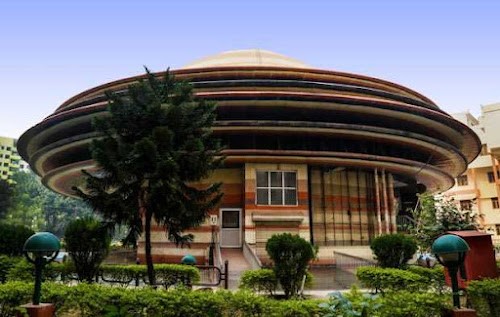

The Planetarium in Patna, more commonly known as Taramandal, is about to face the greatest technological evolution to date, with the officials working day and night to rescue the lost glory of the Indira Gandhi Science complex. It has been sourced that a specialised aluminium sheet has arrived from the USA, which is to adorn the upper dome of the gallery, functioning as a starry screen.

Once the interior work was accomplished, like the heightening of the gallery floor, levelling and hooking the supporting structure of the dome into place, the officials went on to exercise their prowess in developing the dome-shaped projection screen. This is just the beginning of an extensive plan to revamp the Indira Gandhi Science complex completely.
The latest screen customised for the dome's inner side has currently arrived from the USA and is 16 meters in diameter. The installation will be unique and requires a lot of professional attention as the aluminium dome has been designed to be a chain-bounded screen that would hang from the planetarium's rounded ceiling.
The screen would be flexible enough to shift from 2D to 3D configurations in a whiff, and the procured shows would instil a space travel experience ranging from glances of various anomalies of the universe and a special tour of celestial bodies. As the workers of the planetarium reported, the mounting of the aluminium screen would be complete by the first week of February.
Though the aluminium screen is ready to be installed and has arrived successfully from the USA, the projection machine is scheduled to be brought in from Germany, and as officials disclosed, it will arrive after the installation of the aluminium screen is absolutely accomplished.
The INR 36 crore fundraised for the Patna planetarium will be utilised for its refurbishment by March 2023. After the renovation of this twenty years old planetarium, a high-end digital 2D/3D RGB (red, green, blue) laser-based German projection would also be housed within the auditorium for a life-like feel.
The mechanical engineer of the project, Amaya Ghosh, explained that the core cutting has been done and now, the mounting of this aluminium screen has begun. He further pointed out: "It is a completely specialised aluminium sheet, which is supplied by USA's Astro Tech. On the structure, the sheet is mounted without any overlapping, after which the screen will be placed. The sheet fitting is not an easy thing, it is completely of special technology, and one person has been trained for the installation of the screen."
"Total of six projectors will be placed strategically, including four for panorama and two for zenith. The projector will offer both a 2D and 3D experience to the audience. For 3D shows, special glasses will be provided by the German-based Karl Ziess along with the projection system," he added.
According to the pre-planned curriculum, the seats have been reorganised within the planetarium so that viewers might watch the show from the most suitable area with a proper alignment to the hanging aluminium screen.
The seats would be reduced by a huge 16% so that the viewers might incline back comfortably for the 2D/3D space show on the screen above.
Amaya Ghosh illustrated his views: "The scaffolding is already put up on the platform, which will be dismantled once the screening and projection work will be done. After the temporary structure will be removed, the pushback chairs will be installed on the levelled platform."
As the officials also confirmed, the old projection system and screen have been safely transferred to a museum room, and stories regarding the 1982 established opt-mechanical system would remain on display for the history buffs.
Responses








